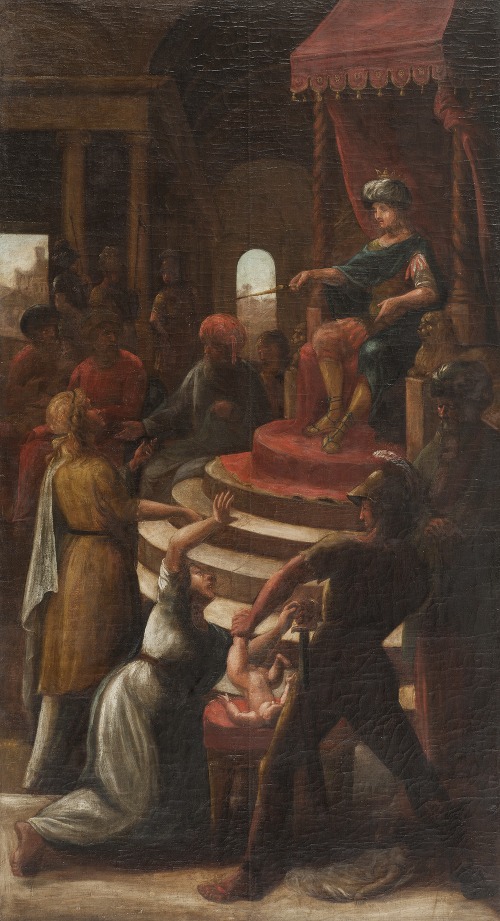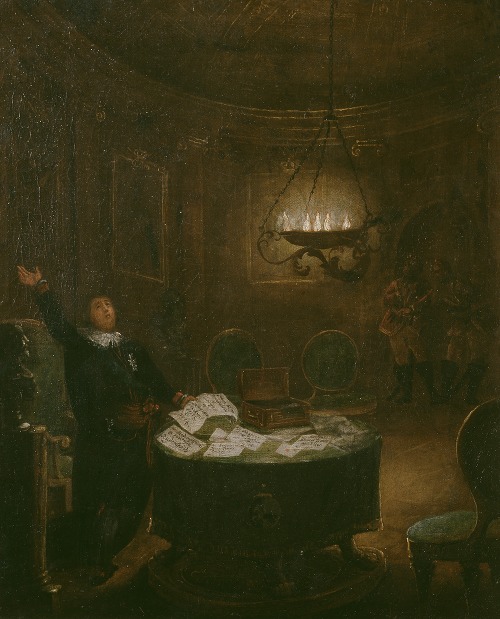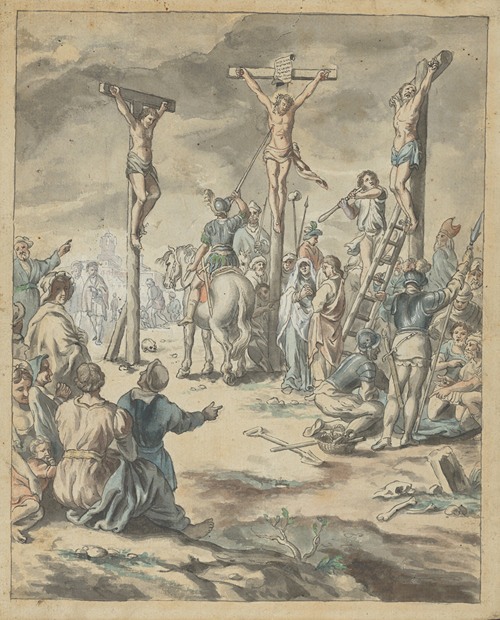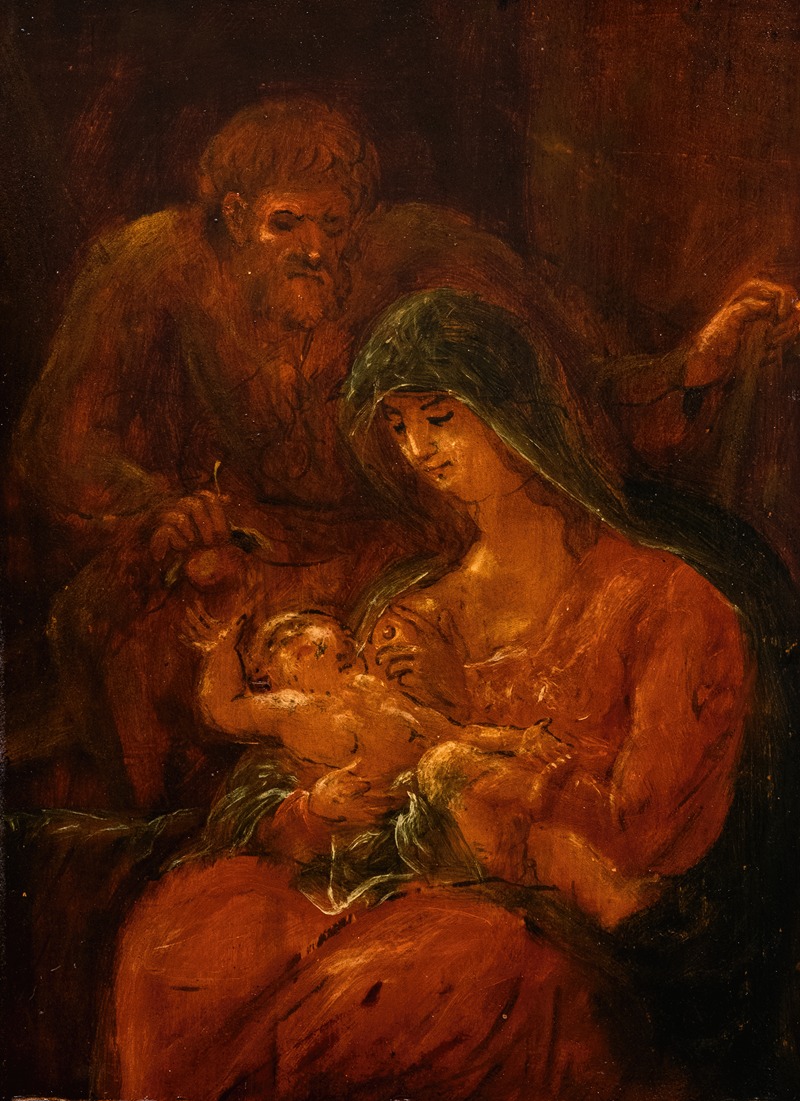
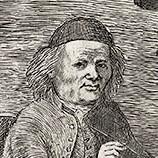
Pehr Hörberg was a Swedish artist, painter and musician. In 1769 he married the maid Maria Eriksdotter and they had three sons.
Pehr Hörberg's birthplace Virestad is a small town and a village in Älmhult Municipality in Kronoberg County, in Småland, Sweden. It was formerly the central area of the old Virestad parish. The church in Virestad was built of stone 1799–1800 on the site of a former medieval church. Some of its treasures include a pulpit from the 1600s and an altarpiece by Pehr Hörberg. He died in Falla in Hällestad Bergslag, where he owned 1/4 of the homestead, and part of the village Olstorp, in Risinge parish, where he also owned 1/4 of the homestead. Both the fourth in Falla in Hällestad and the fourth in Olstorp in Risinge were mining districts estates, located in Finspång Municipality in Östergötland County. Hörberg got his "huts in an aiding position", so to his own satisfaction that he 25 years later wrote about Olstorp and the farm in Falla, that he had later acquired, that the estates were very important for him.
Pehr Hörberg grew up in a poverty-sticken soldier crofter's holding Övra Ön and began to craft- and tapestry artist in Småland. Then he started as a professional painter in the rural areas in the Swedish countryside and then he became a county painter in Småland.
He early showed a passion for painting. His works, which he brought forth with primitive colors and materials, caused a sensation and wonder in the district. After a few summers as a shepherd boy, he was apprenticed to a decorative painter in Växjö. He completed his apprentice training and served as crafts- and Church painter in the area of Sävsjö and Eksjö.
In 1769 he married the maid Maria Eriksdotter and together they had three sons. The family lived in poverty in a cottage, but later the family had access to a crofting. In 1783 a long-awaited dream fior him came true. He came to Stockholm and studied for three periods during the years 1783–1787 at the Royal Swedish Academy of Arts in Stockholm.
Finally, at the age of 37 years, he got the opportunity to study at the Royal Swedish Academy of Arts (Konstakademien) in Stockholm, on and off, between the years 1783–1786 for the famous Swedish painter Carl Gustaf Pilo (1711–1793), a Swedish-born artist and painter. Carl Gustaf Pilo was named Director of the Swedish Academy in 1777, but first took office in 1780 when he also received an apartment in Stockholm as part of his directorship at the Academy. Carl Gustaf Pilo lived out his days at the Academy, both engaged in the Academy's business and in painting his masterpiece, the painting of The Coronation of Gustaf III in Storkyrkan, Stockholm [sv] which he worked on until the very end of his life.
He copied paintings from old masters for the purposes of studying the paintings and the antique plaster sculptures which made a deep impression on him, such as the statue of Laocoön and His Sons (50 B.C.) (Swedish: Laokoongruppen [sv]), at that time it was in the Royal Swedish Academy of Arts in Stockholm, and Rembrandt's The Conspiracy of Claudius Civilis or Bataverna's allegiance (Swedish: Batavernas trohetsed (1662)). Rembrandt's oil painting The Conspiracy of Claudius Civilis has been in the ownership of the Royal Swedish Academy of Arts since 1798 and it has been deposited in the Nationalmuseum in Stockholm since 1864.
Hörberg also got permission to study the collection of paintings in Drottningholm and took part of some of the Swedish nobleman, portrait painter and royal court painter Ehrenstrahl's works at the Storkyrkan in Stockholm, Sankt Nikolai kyrka (Church of St. Nicholas), in Gamla stan in Stockholm. But already during the time in Växjö Hörberg had seen the graphic works of Raphael (Raffaello Sanzio da Urbino, 1483–1520), the Italian master painter and architect in High Renaissance, and Wierix renaissance works with its numerous figurative scenes in classicism surroundings. The Wierix family (or "Wierix" and other variants) were a Flemish dynasty of printmakers in engraving printmakers in the 16th and early 17th centuries, active in Antwerp and Brussels.
A painting, which he admired particularly strong and often returned to, was the altarpiece in Växjö Cathedral with the motif The Ordain of the Communion, painted in 1733 by the Swedish painter Georg Engelhard Schröder.
In 1788, Pehr Hörberg purchased a homestead in Olstorp in Risinge near Finspång in Östergötland. That was a real estate business that must have brought attention among the peasants in Rising and especially in Olstorp was made up in 1788. Then the crofter son from Småland, "The Royal Court Painter", Pehr Hörberg, bought a fourth part mantal by Chamberlain Jean-Jacques De Geer (1737–1809) [sv], a Swedish baron and upper-class chamberlain family De Geer.
In March 1790, Pehr Hörberg moved to Rising in Östergötland, where he had bought his new homestead Olstorp in Östergötland. Chamberlain Jean-Jacques De Geer af Finspång (1737–1809), at Finspång castle, gave him commissioned works in quantity and he also got assignments for the church. He dedicated himself quickly knowledge and appropriated rococo art soft colors and Carl Gustaf Pilo's chiaroscuro, and impressions especially from Rembrandt.
During his time in Olstorp, Pehr Hörberg painted most of his altarpieces. And when he portrayed "Jesus' Sermon on the Mount" in Risinge Church's altarpiece a piece of Olstorp's nature formed the framework. Just where "riksväg 51" is today in a slight downhill slope approaching the parish border with Hällestad, there is, north of the road, a small rocky knoll. "There the Master is sitting!" At least this is what many people[who?] believe. The dwelling-house on "Hörbergsgården" (Hörberg farm) has been rebuilt several times. The entrance door was moved, the roof was raised and so on. Today's house probably looks quite different from when Pehr Hörberg built it.
He was commissioned to paint altarpieces for a large number of churches in several parishes, especially from the parishes in Småland and Östergötland. Consequently, he got orders for painting the altarpieces.
The year before his death, in 1815, Pehr Hörberg painted his 87th altarpiece, which also was his last. He takes up the Geatish motif (Swedish: Götiska Förbundet) and he is the first Swedish arts incipient romantic. The 87 altarpieces he painted were mainly in Linköping diocese. He was a godly man and he spent a lot of feeling in his altar paintings. He was honest as clear water. He also painted easel paintings with religious, mythological and historical subjects and still life and moreover he made engravings, woodcuts and tapestries. The drawings often reveal his lack of education, but the compositions are often grand and lively, the colors are highly impressive and the atmosphere, especially in his religious motives, are heartfelt. Hörberg's altarpieces associates with a previous tradition of chiaroscuro paintings with elements of baroque lighting effects and a classicism environment.
Pehr Hörbergs väg, a way in Södra Ängby in Bromma in Stockholm, is named after the artist Pehr Hörberg. In Södra Ängby there are seventeen ways named after Swedish artists.
Pehr Hörberg wrote an autobiography in 1787. The book by Pehr Hörberg was called: "Min lefwernes beskrifvning" (The description of my life). The book was written in 1791 with additional text in 1815 and it was published in 1968 by Risinge Hembygdsförening and Östgöta konstförening, with introductions by Bengt Cnattingius. In 1796 Pehr Hörberg became a member of the Royal Swedish Academy of Arts and royal court painter. He was a popular and respected artist.
